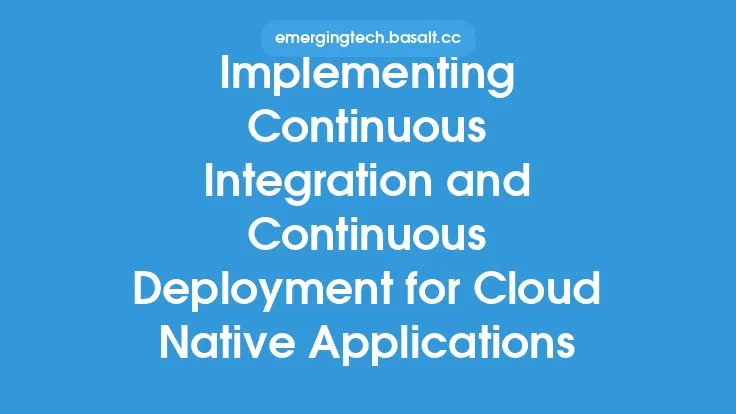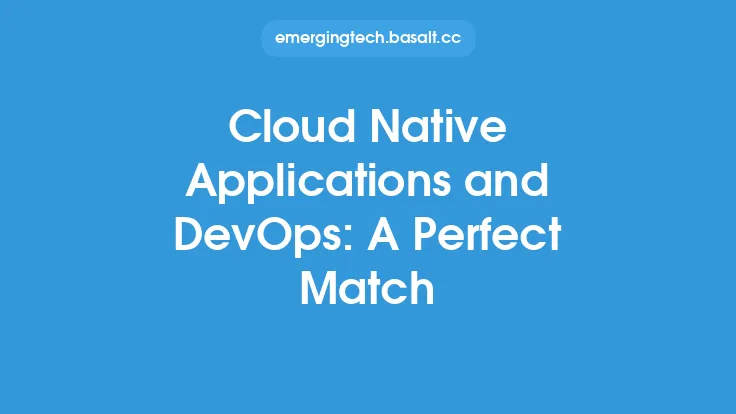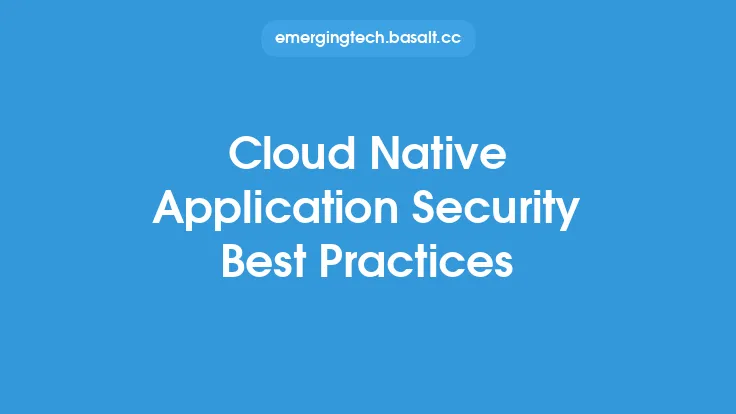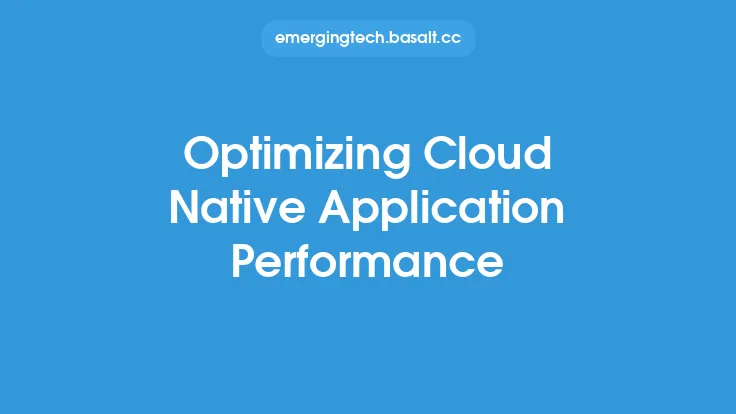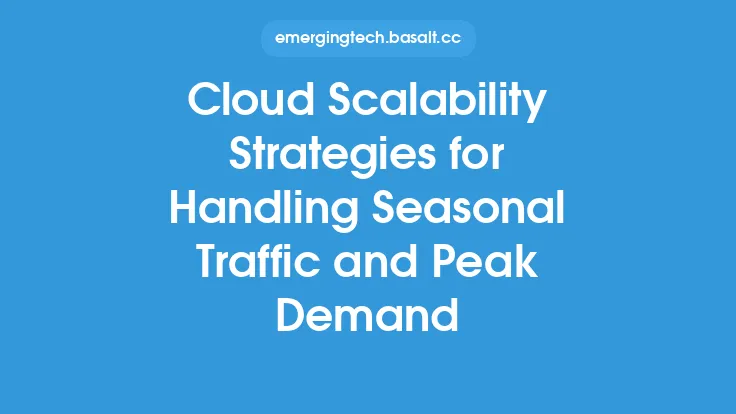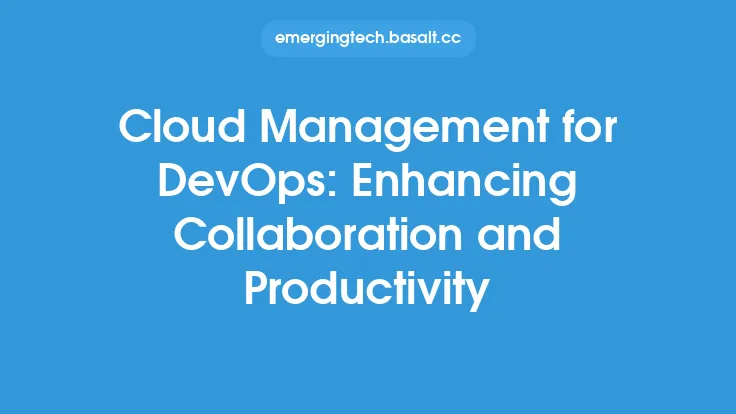Cloud native applications are designed to take full advantage of cloud computing principles and services, providing scalability, flexibility, and resilience. However, as these applications grow in complexity and scale, monitoring and logging become critical components to ensure their smooth operation and performance. Effective monitoring and logging strategies enable developers and operators to identify issues, troubleshoot problems, and optimize application performance. In this article, we will delve into the world of cloud native application monitoring and logging, exploring the key concepts, tools, and best practices that can help you build a robust and reliable monitoring and logging framework.
Introduction to Cloud Native Application Monitoring
Cloud native application monitoring involves collecting and analyzing data from various sources to gain insights into application performance, health, and behavior. This data can come from application logs, metrics, traces, and other sources, providing a comprehensive view of the application's operation. Monitoring is essential for identifying issues, detecting anomalies, and optimizing application performance. In cloud native applications, monitoring is particularly challenging due to the distributed and dynamic nature of the environment. Applications are often composed of multiple microservices, running on different hosts, and communicating with each other through APIs and messaging systems. This complexity requires a monitoring strategy that can handle the scale and diversity of the application.
Logging Strategies for Cloud Native Applications
Logging is a critical component of cloud native application monitoring, providing valuable insights into application behavior, errors, and performance issues. Logs can be collected from various sources, including application code, frameworks, libraries, and infrastructure components. Effective logging strategies involve collecting, processing, and analyzing log data to identify trends, patterns, and anomalies. In cloud native applications, logging is often distributed and decentralized, with logs generated by multiple services and components. This requires a logging strategy that can handle the volume, velocity, and variety of log data, providing real-time insights and alerts. Some best practices for logging in cloud native applications include using standardized log formats, implementing log rotation and retention policies, and using log aggregation and analysis tools.
Monitoring Tools and Technologies
A wide range of monitoring tools and technologies are available for cloud native applications, each with its strengths and weaknesses. Some popular monitoring tools include Prometheus, Grafana, New Relic, and Datadog. These tools provide real-time monitoring and analytics capabilities, allowing developers and operators to track application performance, latency, and errors. Other tools, such as ELK (Elasticsearch, Logstash, Kibana) and Splunk, provide log aggregation and analysis capabilities, enabling teams to gain insights into application behavior and performance issues. In addition to these tools, cloud providers offer native monitoring and logging services, such as Amazon CloudWatch, Google Cloud Logging, and Azure Monitor. These services provide integrated monitoring and logging capabilities, making it easier to collect, process, and analyze data from cloud native applications.
Distributed Tracing and Observability
Distributed tracing and observability are critical components of cloud native application monitoring, providing insights into the behavior and performance of distributed systems. Distributed tracing involves tracking the flow of requests and transactions across multiple services and components, providing a comprehensive view of application behavior. Observability involves collecting and analyzing data from various sources, including logs, metrics, and traces, to gain insights into application performance and behavior. Tools like OpenTracing, Jaeger, and Zipkin provide distributed tracing capabilities, while tools like Prometheus and Grafana provide observability capabilities. By combining distributed tracing and observability, teams can gain a deeper understanding of their cloud native applications, identifying performance bottlenecks, errors, and areas for optimization.
Best Practices for Cloud Native Application Monitoring and Logging
Effective monitoring and logging require a combination of people, processes, and technology. Some best practices for cloud native application monitoring and logging include implementing standardized logging and monitoring formats, using automation and orchestration tools to streamline monitoring and logging workflows, and providing real-time alerts and notifications to teams. Other best practices include using cloud native monitoring and logging services, implementing log rotation and retention policies, and using distributed tracing and observability tools to gain insights into application behavior. Additionally, teams should prioritize monitoring and logging, making it an integral part of the application development and deployment process. By following these best practices, teams can build a robust and reliable monitoring and logging framework, ensuring the smooth operation and performance of their cloud native applications.
Conclusion
Cloud native application monitoring and logging are critical components of modern cloud computing, providing insights into application performance, health, and behavior. By implementing effective monitoring and logging strategies, teams can identify issues, detect anomalies, and optimize application performance. A wide range of tools and technologies are available, each with its strengths and weaknesses. By combining these tools with best practices and a deep understanding of cloud native applications, teams can build a robust and reliable monitoring and logging framework, ensuring the smooth operation and performance of their applications. As cloud native applications continue to evolve and grow in complexity, monitoring and logging will play an increasingly important role in ensuring their reliability, scalability, and performance.
